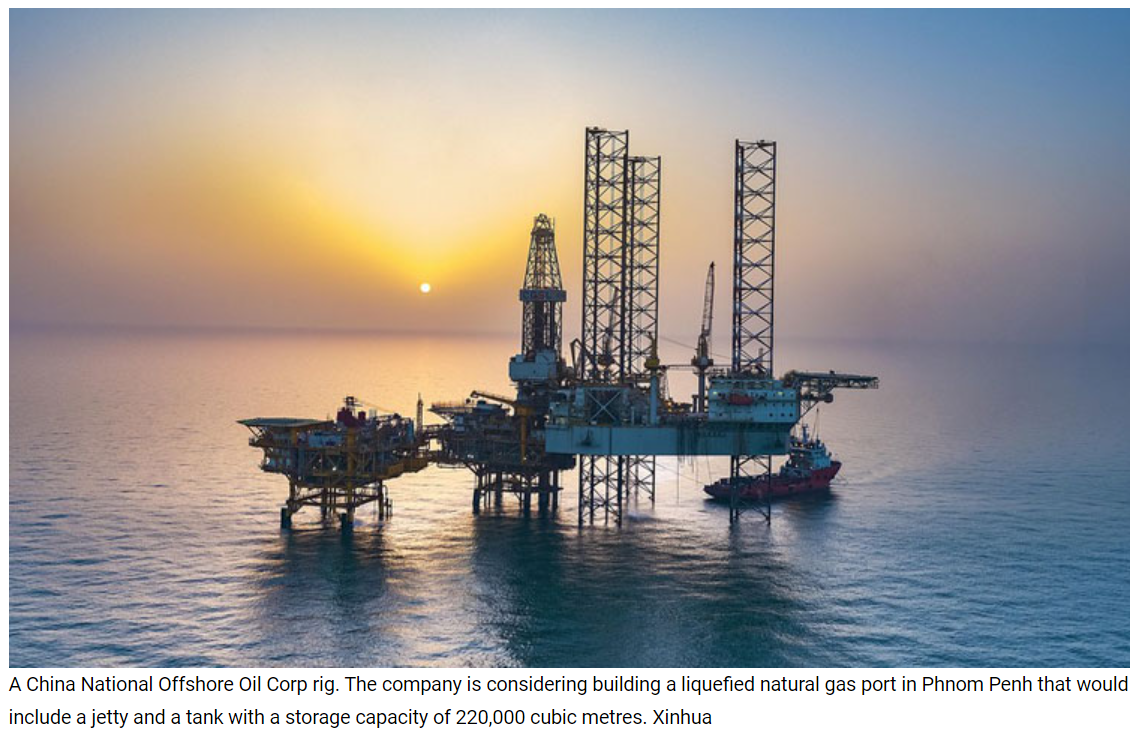China overtakes US in ASEAN investments
Large Chinese investments are overtaking US financing in ASEAN, according to Nikkei Asia. The mainland has already invested more than $5.3 billion under its Belt and Road Initiative (BRI), according to the University of Southern California’s US-China Institute in Los Angeles. On June 22, the mainland agreed with Cambodia to intensify cooperation in transportation networks. China National Offshore Oil Corp (CNOOC) Gas & Power – the country’s largest liquefied natural gas (LNG) project developers is considering building an LNG port in Phnom Penh that would include a jetty and a tank with a storage capacity of 220,000 cubic metres. “Coupled with Cambodia’s surging demand for power and relatively creditworthy national utility company, these plans justify cautious optimism for the future of the country’s LNG-to-power sector,” US-based law firm White Case said in May. A Standard Chartered survey on ASEAN found more than 60 percent of respondents were looking to expand their sales or production in the region by at least 10 percent this year.
“ASEAN presents a major growth opportunity for Chinese companies looking to internationalise. The region’s fast-growing consumer markets, rapidly maturing supplier landscape and regional trade links offer Chinese companies strong growth potential in sectors such as high-value manufacturing, energy and digital services,” the UK-based bank said. “In 2020 the ASEAN region overtook the European Union to be China’s largest trading partner. This is validated in terms of activities and the demand for banking services in line with China’s supply chain optimisation efforts,” explained Heidi Toribio, regional co-head at Standard Chartered’s commercial and institutional banking division.
“While the increased demand for banking services [from Chinese companies venturing into ASEAN] is coming from a variety of sectors, we’re seeing quite a bit of concentration coming from tech, transportation, electronics and clean energy,” she added. Chinese foreign direct investment in Cambodia amounted to $1.393 billion in 2020, according to the Ministry of Foreign Affairs and International Cooperation. Most of these investments have been in infrastructure projects, including roads, bridges, seaports, airports, railways, hydropower dams and communications, among others. In total, it is believed that BRI has created nearly 20,000 new jobs for Cambodians since 2013.
Bradley Parks, executive director for US-based AidData previously said a popular claim is that China finances “white elephant” projects that deliver weak economic returns, making it difficult for borrowers to repay their loans.
“Western donors and lenders often point to individual roads that have fallen into a state of disrepair, airports in rural outposts that lie unused and seaports with almost no container traffic… Beijing funds economic and social infrastructure projects that yield few economic benefits, while Western donors and lenders fund higher impact projects because they have learned to design and implement projects in careful and sustainable ways,” he said.
Source: https://www.khmertimeskh.com/50887981/china-overtakes-us-in-asean-investments/


 English
English




